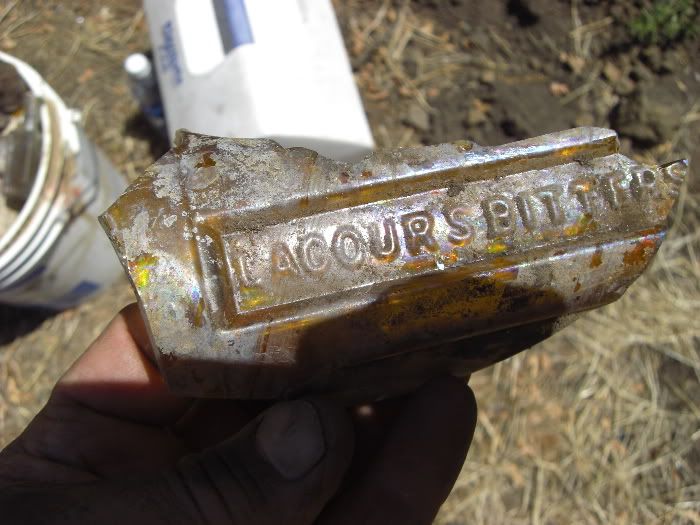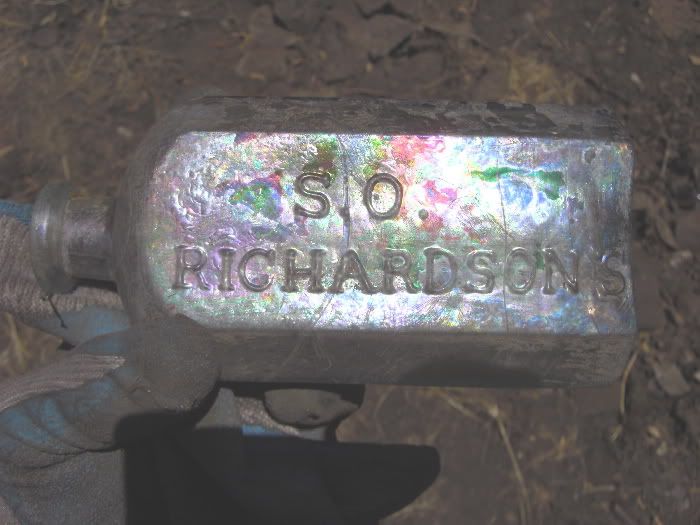
Here is a shard that was sent in from Rob Goodson, it is a partial panel from a square style bottle. It was dug along with a Dr. Boerhaave's Stomach Bitters example below.
example below.
 example below.
example below. This Boerhaave's example is in a terrific olive color, which I have never seen before. There are approximately 11 examples of this bottle currently in western collections, most being the dark green with a couple in old amber.
This is another bitters product which was advertised briefly. Three different advertisements were found for this product in four different newspapers. The earliest advertisement shows Siegfried Wertheimber as the agent at 311 Commercial St, San Francisco, this ad began on March 7th, 1868 and ran several times in the San Francisco Daily Dramatic Chronicle paper. This product was also advertised in the Los Angeles paper in 1868 by a local druggist. It was also marketed in Oregon by Millard & Van Schuyver agents in the Portland Morning Oregonian paper from May 15th, 1868 thru January 28, 1869. Again S. Wertheimber was the agent in S.F. The last advertisement shows S. Wertheimber & L. Waterman in an ad, where there location was now 219 Commercial St, S.F.
(The ads promoted this product by using a testimonial from a Prof. Hildebrand, a distinguished Physician of Vienna, who has used them for thirty years.)















.jpg)








